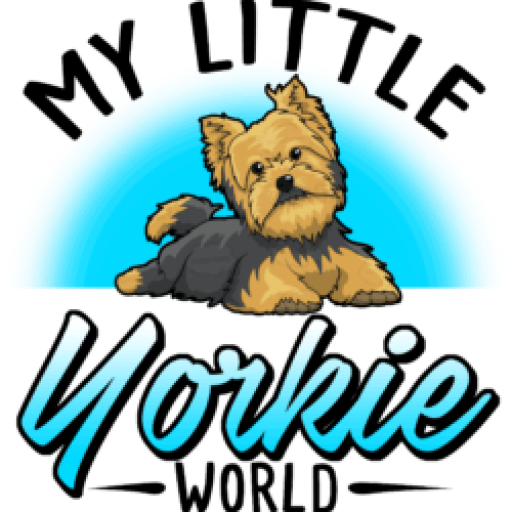Breed Origin and History
Pull up a chair and join us on our journey to track down and investigate the breed history and origin of Yorkshire Terrier (also called a “Yorkie”) along with its epic story that put its name to the very pedestal of dog pedigree.
Where do Yorkies come from?
One may speculate and maybe utter a wild guess that Yorkies came from New York in the United States. Well, it is true that Yorkie is one of the most popular dog breeds in New York City. However, this breed never walked the shores of North America until 1872 and registered with the AKC (American Kennel Club) in 1885.
The amazing Yorkshire Terrier came from Yorkshire and Lancashire in North of England. It was in the mid-19th century when migrants from Scotland looking for work in Yorkshire brought with them small breed toy dogs. These migrant workers operated in the cotton and woolen mills. During this period, big rats were pillaging the mills and caused serious economic loss and fear from the black plague that claimed so many lives all over the world.
One day, a worker brought his dog to his workplace in the mills. The owner of the mill was so surprised that the dog began chasing, hunting even in the coal mines, and killing the rats one by one. Hence, from that day forth, the dog breed was named Yorkshire Terrier.
The parents of Yorkshire Terrier
One may wonder which breeds of dog were crossed to get the Yorkshire Terrier bloodline. It has been recorded that the parents of Yorkies are Paisley Terriers, a small breed Terrier with long and beautiful silky coat. The Maltese was also believed to be one of the forefathers of Yorkies. The first male Yorkie was named “Old Crab” and the first female was named “Kitty”. In 1878 , a book was published by Hugh Dalziel and the Yorkshire Terrier was immortalized.
The memoirs of Paisley Terrier
The Paisley Terrier originated from Scotland. This breed was primarily bred for pet and show purposes. The coat of a Paisley Terrier is a silky, silvery, soft jacket of blue and tan – a wonderful, gorgeous, and spectacular coat anyone had ever seen. Sadly though, Paisley Terriers are now extinct, but the memoirs of its coat will forever be in the hearts of the modern Yorkie.
The mighty Maltese
One of the oldest dog breeds of the Roman Empire, the Maltese was a dog of choice for many Roman senators, generals, and noble families. No wonder this dog contributed the very DNA and the genetic makeup that forged the Yorkshire Terrier.
The long silky coat of the Maltese captivated the eyes of so many wives of Roman officers. In 370 B.C., the Maltese was even mentioned by Aristotle and named it Melitaei Catelli.
How did the Maltese travel to England? It was during the time when the Romans invaded England that they brought with them this mighty dog. And so the Maltese played a significant role in the Yorkshire Terrier’s breed.
The definition of Yorkshire Terrier
At the tender age of this breed, almost all dog owners all over England admired this dog having a long silky coat, with fawn or silver head, and legs with blue on the body. In 1860, there was a very popular dog named Huddersfield Ben owned by a woman, Mary Ann Foster, who was a native of Yorkshire. The definition of Yorkie was taken from Huddersfield Ben who was on every dog show all over Great Britain and this ultimately defined the Yorkie forever. Huddersfield Ben then was named the Father of the modern Yorkshire Terrier.
The registration
In 1885, the Yorkshire Terrier was registered with the AKC, thirteen years after the first Yorkie arrived in North America brought by noblemen from Great Britain exploring the American new world.
In the blink of an eye, Yorkshire Terriers became a popular pet of working-class Americans and served two purposes in every household – for its fancy looks and for its ability to hunt rats.
Any color as long as it is not white
The fur texture, length, and color will predict the quality of a Yorkie. One of the pebble minded 18th century writers who opposed the breed creation on Yorkie once said, “The color of Yorkie is ridiculously hard to grade!”
These are the acceptable Yorkie fur characteristics and colors:
- Hair must be glossy, fine, straight, and silky
- Black or dark gray from the back of the neck to the base of the tail
- Tail should be black
- The head, high chest, and legs should be a bright rich tan
- The hip should be light tan
- In adults, there should be no black color inside the tan regions of the body
The grading of colors is so defined. No wonder one of the 18th century writers questioned the breed itself.
References
- Yorkshire Terrier History, Weston Lee, 2007
- Schultz, Jacque Lynn (2004). “The Terrier Tyke With a Big Attitude”. ASPCA. Archived from the original on 30 December 2004. Retrieved 10 March 2007.
- https://en.wikipedia.org/wiki/Yorkshire_Terrier/sept_17_2015
